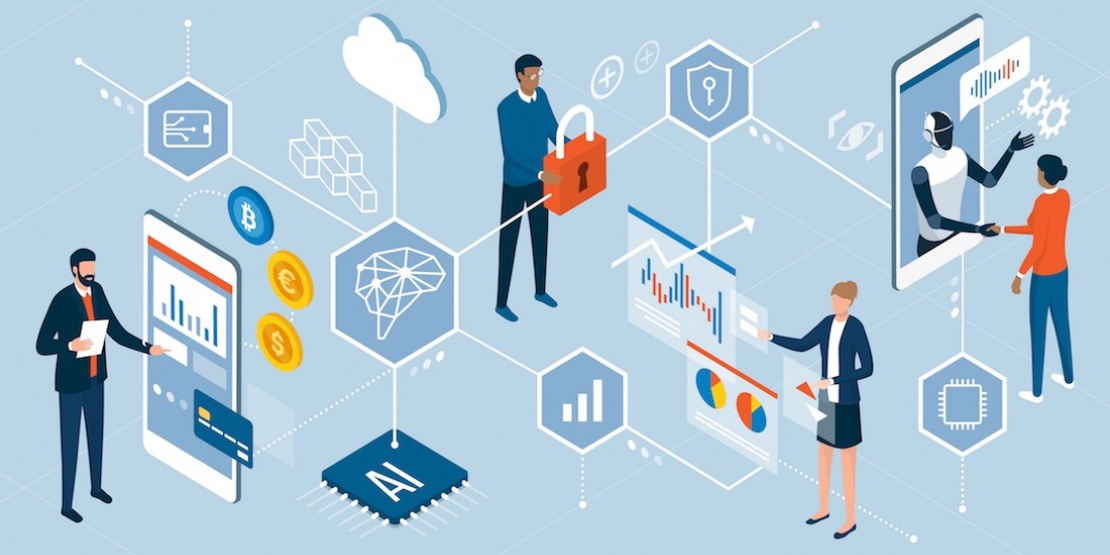Initially confined to a few business sectors for technological reasons, pay-as-you-go is one of the latest models to now be gaining ground within companies. It has the power to transform numerous trades and professions and to offer them brand new opportunities. Procurement departments in particular can rely on this payment model as a springboard into activities outside their usual scope.
Find out how the pay-as-you-go model can be applied to procurement, and discover its associated advantages and disadvantages.
What is pay-as-you-go?
Changes in payment models can reveal new ways to design a product or service, or even to estimate its value.
Pay-as-you-go is a model that values not the object of a sale in itself, but the benefits that it generates. In other words, a customer pays for the use of a good or service. For example, they don't buy a coffee machine as a product, but as a machine capable of serving a number of coffees specified at the time of sale.
It is therefore a model built on the principle of service. Thanks to the latest technological advances, even the most tangible products can be paid for as you go. The service purchased is measured through data collection and analysis, which are provided by technologies such as the Internet of Things (IoT). As a result, more goods are purchased on a pay-as-you-go basis in the world of business and this helps transform the options open to procurement departments.
The applications of pay-as-you-go to procurement
Pay-as-you-go strengthens a procurement department's contribution to several corporate objectives:
- Economic performance: Thanks to sensors and data technologies, a growing number of products can be bought using pay-as-you-go. Thus, procurement departments have more opportunities to transform CAPEX (acquisitions of capital assets, i.e. of elements "owned" by the company) into OPEX (operating expenses, i.e. expenses incurred by a company in running its business), which constitutes an economic advantage for the company.
- The ROIst approach: Pay-as-you-go is based on the idea of a recurring payment. Procurement departments can therefore both predict the financial impact of investing in products and services more easily, and calculate their added value and ROI more effectively.
- Investor relations: The recurring nature of pay-as-you-go payments means procurement departments can use the additional clarity they provide to defend their investment choices with financial partners.
- The establishment of an attractive offer: The products and services sold on a pay-as-you-go basis present an unprecedented degree of connectivity. Thanks to data technologies, the offer is tailored to the customer's needs and its performance can be measured more easily.
- Protection of the environment and of society: As pay-as-you-go is based on the usage activity of an item provided, it is in the interest of suppliers to maximise the life of their products and strengthen associated services such as maintenance and energy savings. Procurement departments can therefore access indicators that they can then use to support the CSR approaches determined by the company. They can, through pay-as-you-go, favour a sustainable and responsible purchasing policy by choosing sustainable value, more energy-efficient equipment, reducing carbon footprints, creating a circular economy and so on.
A new stance for procurement
Pay-as-you-go can change a company's expectations of its suppliers. This model gives the supplier greater involvement in the supply of products. It requires them to provide more additional services, such as energy savings. As a result, suppliers could potentially be involved throughout the entire life of the product. They have greater responsibility for the customer's perception of the quality of the product or service, both before and after purchase.
However, the pay-as-you-go model still has restrictions that sometimes slow its development within companies. These restrictions are:
- Contractual: The service logic inherent in the model demands the inclusion of new clauses that require, among other things, the provision of a service agreement defining the appropriate indicators.
- Legal: Pay-as-you-go means companies cannot enjoy some financial benefits that they relied on before, as the category may be changed under the legal system (asset/liability). For example, operational leasing is considered a capital asset, making it less advantageous from a tax point of view.
- Related to buyer reluctance: As pay-as-you-go products are based on data management (data held by the supplier), any stakeholder who does not hold this data may fear a shift in the balance of power. In light of this, procurement departments must provide reassurance to their customers when they are responsible for data usage, especially given that solutions exist. For example, they could use a contractual framework that clearly defines how data may be used by the parties concerned.
It would be a great shame for these obstacles to eclipse the benefits of pay-as-you-go. This is why procurement departments must address the concerns raised by this model and explain the added value that it brings.
Driven by data-related technological advances, the pay-as-you-go model is gradually gaining momentum across all industries. It presents new opportunities for procurement: value creation through associated services, a better ROIst approach to improve the economic performance of the company, or greater involvement in cross-cutting issues such as personalising the offer, investor relations, or preserving the environment and society.









